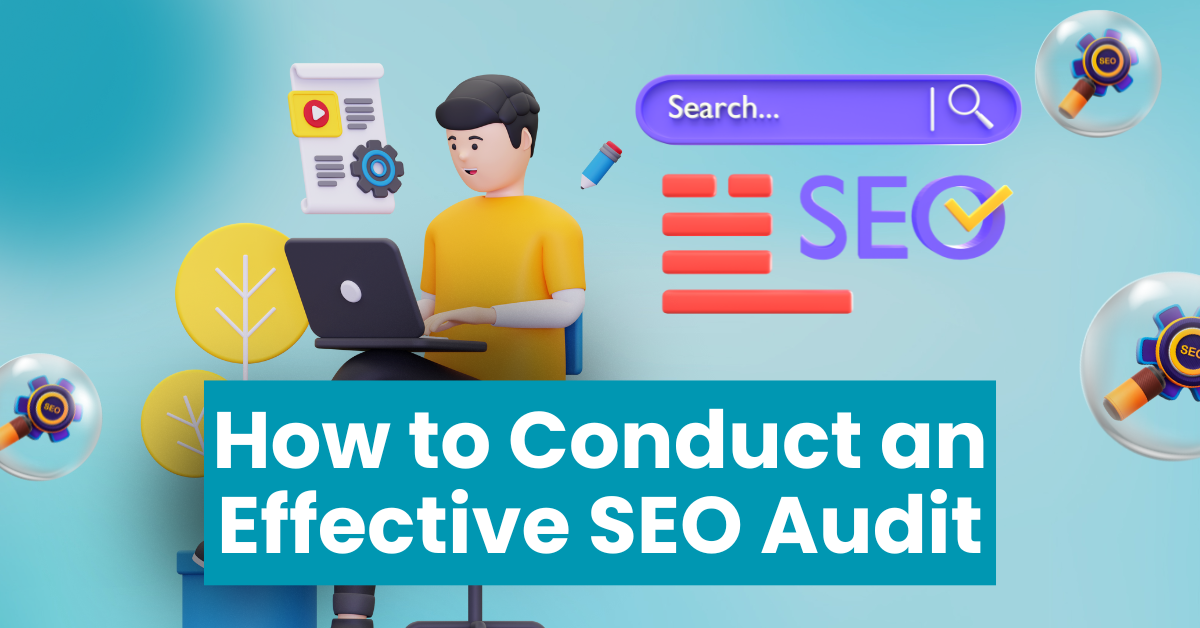Digital marketers, how are you? Are you ready to learn more about SEO audits? Don’t worry—this isn’t going to be a dull audit that makes you want to hide under your desk. This is the cool kind that can make your website run faster and move it up in the search engine results. Now that you have your virtual magnifying glass let’s begin this SEO journey!
Let’s talk about why SEO audits are so important in the digital world we live in now. Recent data from Ahrefs shows that 90.63% of pages don’t get any organic search traffic from Google. That’s a crazy large amount! But there is good news: if you do regular SEO checks, you can get out of that group. A full SEO audit can find problems that aren’t obvious and could be stopping your site from reaching its full potential.
Search Engine Journal also found that 61% of marketers say their top inbound marketing goal is to improve SEO and grow their organic profile. This is proof of how important SEO has grown in the world of online marketing. You’re not just following the crowd when you do a thorough SEO audit; you’re giving your website the best chance to stand out in a world where competition is growing all the time. Are you ready to see what your website can really do? Let’s get down to the details of SEO audits!
Why Bother with an SEO Audit?
Before we jump into the how-to, let’s talk about why you should care about SEO audits in the first place. Think of an SEO audit as a health check-up for your website. It helps you:
- Identify what’s working and what’s not
- Spot opportunities for improvement
- Stay ahead of the competition
- Boost your visibility on search engines
In short, it’s like giving your website a superpower boost!
Step-by-Step Guide to Conducting an SEO Audit
Step 1: Check Your Site’s Indexability
First things first, we need to make sure search engines can actually find and crawl your site. Here’s how:
- Use Google Search Console to check your coverage report
- Look for any “noindex” tags that might be blocking search engines
- Check your robots.txt file to ensure it’s not blocking important pages
Pro tip: Type “site:yourwebsite.com” into Google. If your pages show up, you’re on the right track!
Step 2: Analyze Your Site Structure
A well-organized site is like a well-organized closet – everything’s easy to find. Here’s what to look for:
- Clear, logical navigation
- A solid internal linking structure
- A sitemap that includes all important pages
Remember, if humans can easily navigate your site, search engines probably can too.
Step 3: Evaluate On-Page SEO Elements
Time to put on your detective hat and examine those on-page elements:
- Title tags: Are they unique, descriptive, and under 60 characters?
- Meta descriptions: Do they accurately summarize the page content in 155-160 characters?
- Header tags (H1, H2, etc.): Are they used logically and include relevant keywords?
- Image alt text: Is it descriptive and keyword-rich?
Step 4: Assess Your Content Quality
Content is king, queen, and the whole royal family in SEO. Here’s what to look for:
- Relevance: Does your content match user intent?
- Depth: Is it comprehensive and valuable?
- Freshness: When was it last updated?
- Uniqueness: Is it original or duplicate content?
Remember, Google loves content that answers users’ questions thoroughly and engagingly.
Step 5: Check Your Site Speed
In the digital world, slow and steady does not win the race. Use tools like Google PageSpeed Insights to check your site speed and look for ways to optimize it.
Step 6: Ensure Mobile-Friendliness
With more people browsing on mobile than ever, your site needs to look good on small screens. Use Google’s Mobile-Friendly Test to see how you’re doing.
Step 7: Analyze Your Backlink Profile
Backlinks are like votes of confidence from other websites. Use tools like Ahrefs or Moz to check:
- The quantity and quality of your backlinks
- Any toxic or spammy links that might be hurting your SEO
- Opportunities for new, high-quality backlinks
Step 8: Review Your Local SEO (If Applicable)
If you’re a local business, don’t skip this step! Check your Google My Business listing, ensure your NAP (Name, Address, Phone) is consistent across the web, and look for local citation opportunities.
Step 9: Investigate Your Competitors
A little competitive intelligence never hurt anyone. Look at what your top-ranking competitors are doing right and identify areas where you can outperform them.
Step 10: Create an Action Plan
Now that you’ve gathered all this info, it’s time to put it to use. Create a prioritized list of actions based on your findings. Focus on the changes that will have the biggest impact first.
Tools to Make Your SEO Audit Easier
Don’t worry, you don’t have to do all this manually. Here are some tools that can make your SEO audit a breeze:
- Google Search Console: Your go-to for indexing and crawl issues
- SEMrush: Great for comprehensive site audits and competitor analysis
- Screaming Frog: Perfect for deep-diving into your site structure
- Ahrefs: Excellent for backlink analysis
- Google PageSpeed Insights: Your speed-testing buddy
Wrapping It Up
Doing an SEO audit might seem like a big job, but all you have to do is check different parts of your site’s SEO health one by one. By doing things this way, step by step, you’ll learn a lot about how your website is doing and have a clear plan for how to make it better.
Remember, SEO is an ongoing process. Make auditing a regular part of your digital strategy, and you’ll be well on your way to SEO success. However, staying up-to-date with the world of SEO can be a challenge, especially when you’re focused on conducting audits and implementing changes. Consider visiting the website SocialMarketing90. SEO-focused content can often teach you a lot about search engine algorithms, best practices, and new trends. The latest changes in the digital marketing field can be kept updated with this information, helping you fine-tune your audit process and stay ahead of the game.
So, put on your SEO superhero cape and start auditing. Your website (and your search rankings) will thank you!
Happy auditing, and may the SEO force be with you!

